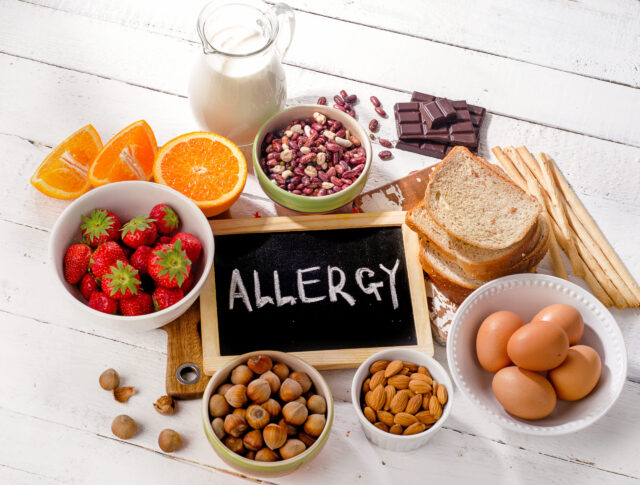Food Allergies:
A food allergy is an immune system response to a food that the body mistakenly identifies as harmful. This reaction occurs when the body’s immune system sees a certain food as an invader and produces antibodies to fight against it. The most common food allergies include:
- Peanuts: Peanut allergy is one of the most common food allergies in the world. This allergy can cause severe reactions, including anaphylaxis, which can be life-threatening.
- Tree nuts: Tree nut allergy is another common food allergy that can cause anaphylaxis.
- Milk: Milk allergy is most common in children and is often outgrown by adulthood.
- Egg: Egg allergy is also common in children, and most children will outgrow this allergy by the age of five.
- Soy: Soy allergy is more common in children, but some adults may also have an allergy to soy.
- Wheat: Wheat allergy is more common in children and can cause symptoms ranging from mild to severe.
- Fish: Fish allergy is more common in adults and can cause anaphylaxis.
- Shellfish: Shellfish allergy is also more common in adults and can cause anaphylaxis.
Food Intolerances:
Food intolerances occur when the body is unable to digest a particular food properly. Unlike food allergies, food intolerances do not involve the immune system. The most common food intolerances include:
- Lactose intolerance: Lactose intolerance is the most common food intolerance and occurs when the body is unable to digest lactose, a sugar found in milk and dairy products.
- Gluten intolerance: Gluten intolerance, also known as celiac disease, is a digestive disorder that occurs when the body cannot tolerate gluten, a protein found in wheat, barley, and rye.
- Fructose intolerance: Fructose intolerance occurs when the body is unable to absorb fructose, a sugar found in many fruits, vegetables, and processed foods.
- Histamine intolerance: Histamine intolerance occurs when the body is unable to break down histamine, a chemical produced by the body and found in many foods.
Symptoms of Food Allergies and Intolerances:
The symptoms of food allergies and intolerances can vary depending on the person and the severity of the reaction. Common symptoms of food allergies include:
- Hives or rash
- Swelling of the lips, tongue, or throat
- Difficulty breathing
- Abdominal pain, nausea, or vomiting
- Diarrhea
- Anaphylaxis
Common symptoms of food intolerances include:
- Bloating
- Gas
- Abdominal pain or cramping
- Diarrhea
- Nausea
Managing Food Allergies and Intolerances:
The only way to prevent a food allergy is to avoid the food that triggers the reaction. In the case of severe allergies, carrying an epinephrine auto-injector can be lifesaving. For those with food intolerances, avoiding the trigger food or limiting intake may help manage symptoms. Consulting a doctor or registered dietitian can also help develop a personalized plan for managing food allergies and intolerances.
In conclusion, food allergies and intolerances are becoming increasingly common in our society today. While the most common food allergies include peanuts, tree nuts, milk, egg, soy, wheat, fish, and shellfish, the most common food intolerances include lact







